This article will cover everything you need to know about utilizing search engine optimization effectively to boost your blog’s visibility and grow organic traffic.
We’ll start by discussing the impact of SEO on blog rankings and how to set realistic goals for your SEO efforts.
Next, we’ll dive deep into keyword research, exploring strategies, tools, and competitor analysis.
Afterward, we’ll cover optimizing your blog content, both on-page and off-page, to enhance your SEO performance.
Finally, we’ll discuss tracking and analyzing your blog’s SEO performance using tools like Google Analytics and adjusting your strategy based on data-driven insights.
Stick around, and you’ll be an SEO master in no time!
TLDR;
- SEO for blogs is essential for increasing visibility and attracting organic traffic.
- Effective SEO involves setting realistic goals, thorough keyword research, and understanding the competition.
- Focus on creating high-quality, engaging content and maintaining consistency.
- On-page optimization includes crafting SEO-friendly titles, using keywords strategically, and optimizing meta descriptions.
- Off-page optimization involves building high-quality backlinks and effective internal linking.
- Regularly track and adjust strategies based on analytics to improve SEO performance.
What is SEO?
SEO (Search Engine Optimization) is the process of improving the visibility of your website in search engine results on Google, Yahoo, and Bing.
It involves implementing various strategies and techniques to achieve higher rankings on search engine results pages (SERPs), this improves the visibility of the website or blog in organic search results.
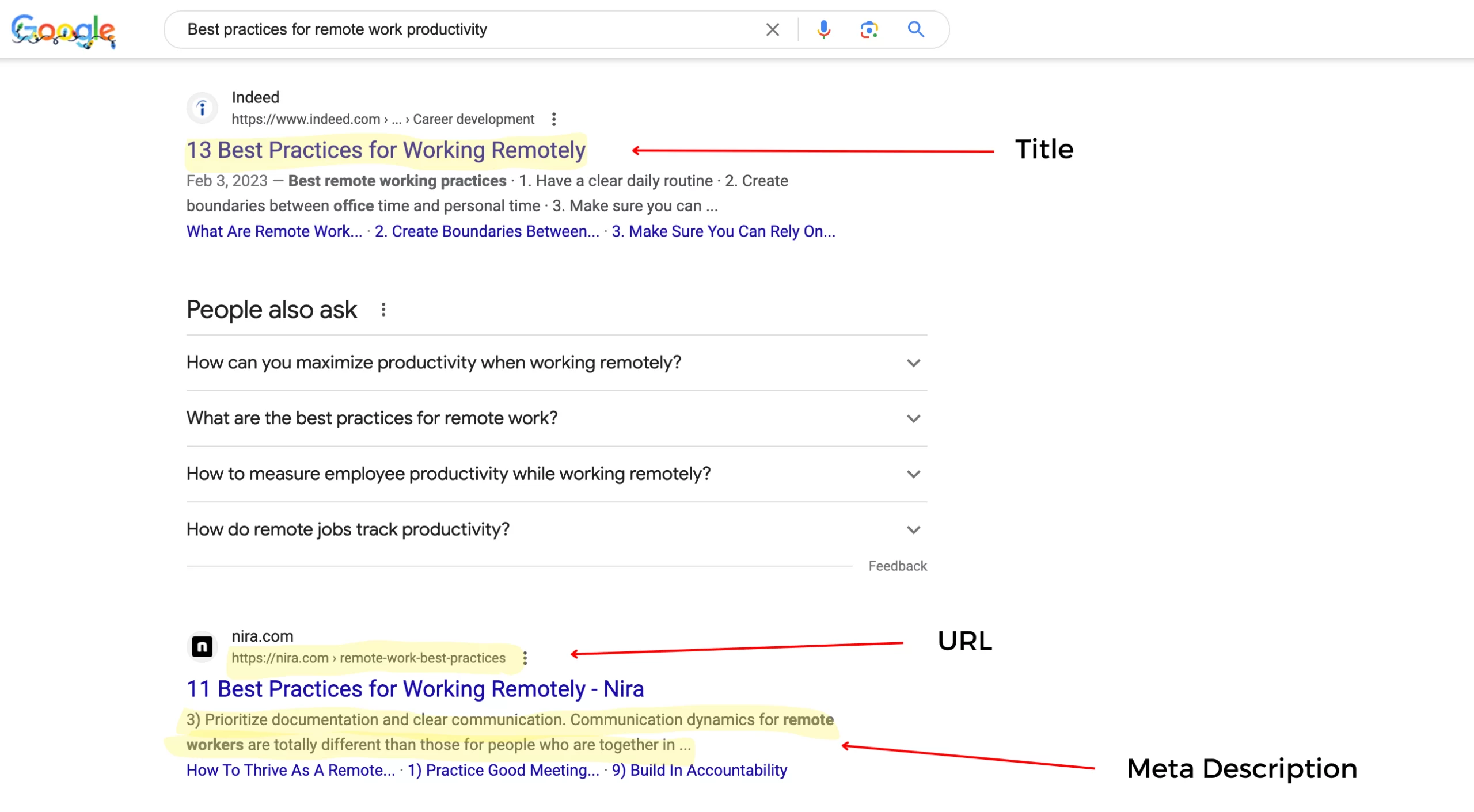
SEO in the online world is important as it helps in attracting more potential visitors to a website or blog and, ultimately, converts them into customers or subscribers.
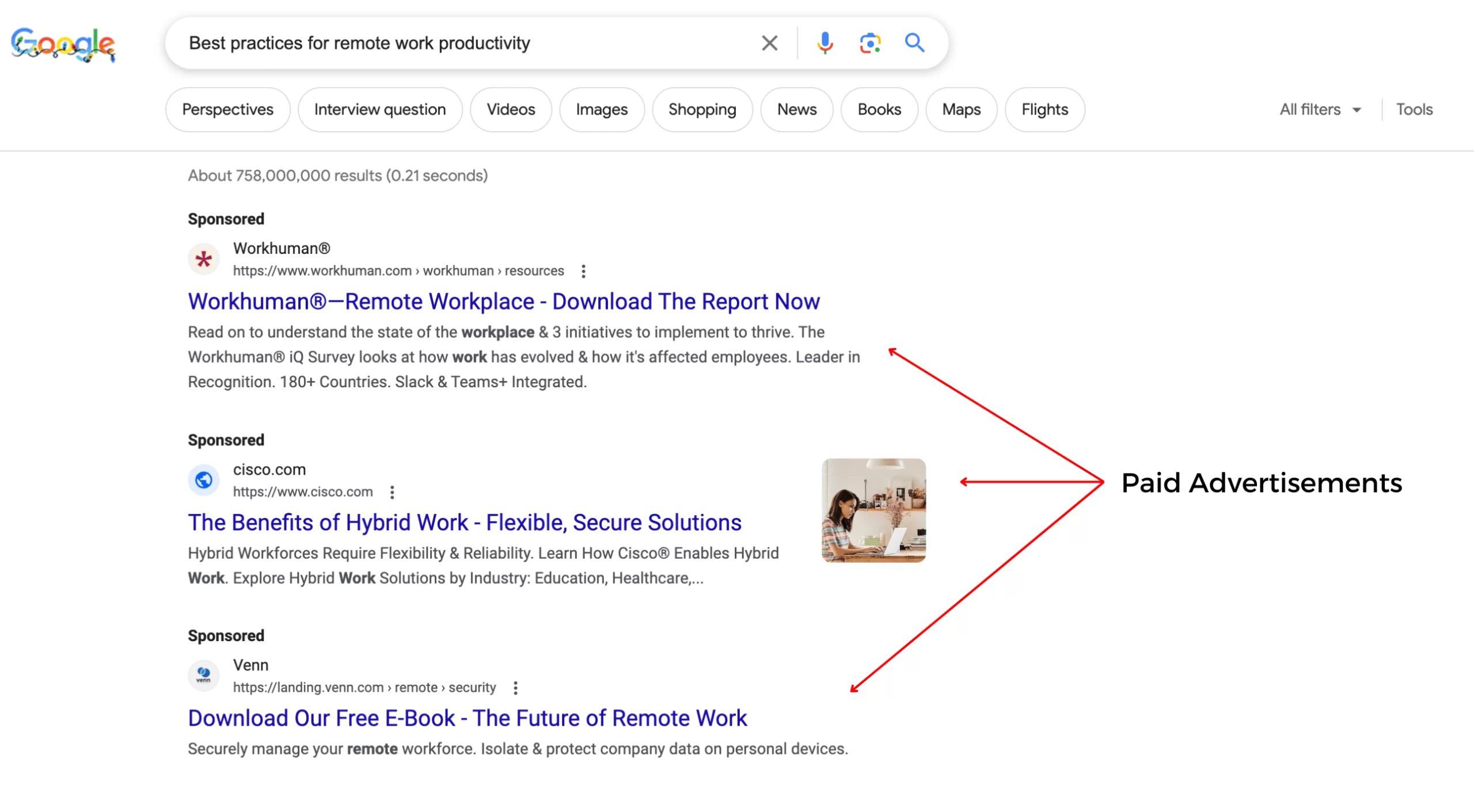
SEO plays a pivotal role in the online world not only in increasing the visibility of a website or blog but also in determining its success.
Many websites compete for the limited attention span of users, and SEO has become an essential tool for businesses to stand out in the cluttered and competitive online market.
How SEO Impacts Blog Visibility
One of the most significant aspects of SEO is organic search traffic. It includes all of the visitors who find a blog or site through search engines without seeing any paid promotion.
Organic search traffic holds immense importance as it is often more targeted and relevant, leading to higher conversion rates and increased brand recognition.
Several factors affect a blog’s ranking, which, in turn, impacts its visibility.
Some of these factors include:
- Content quality.
- Optimized titles and meta descriptions.
- Keyword usage.
- Internal and external links.
- Mobile-friendliness.
- Site speed.
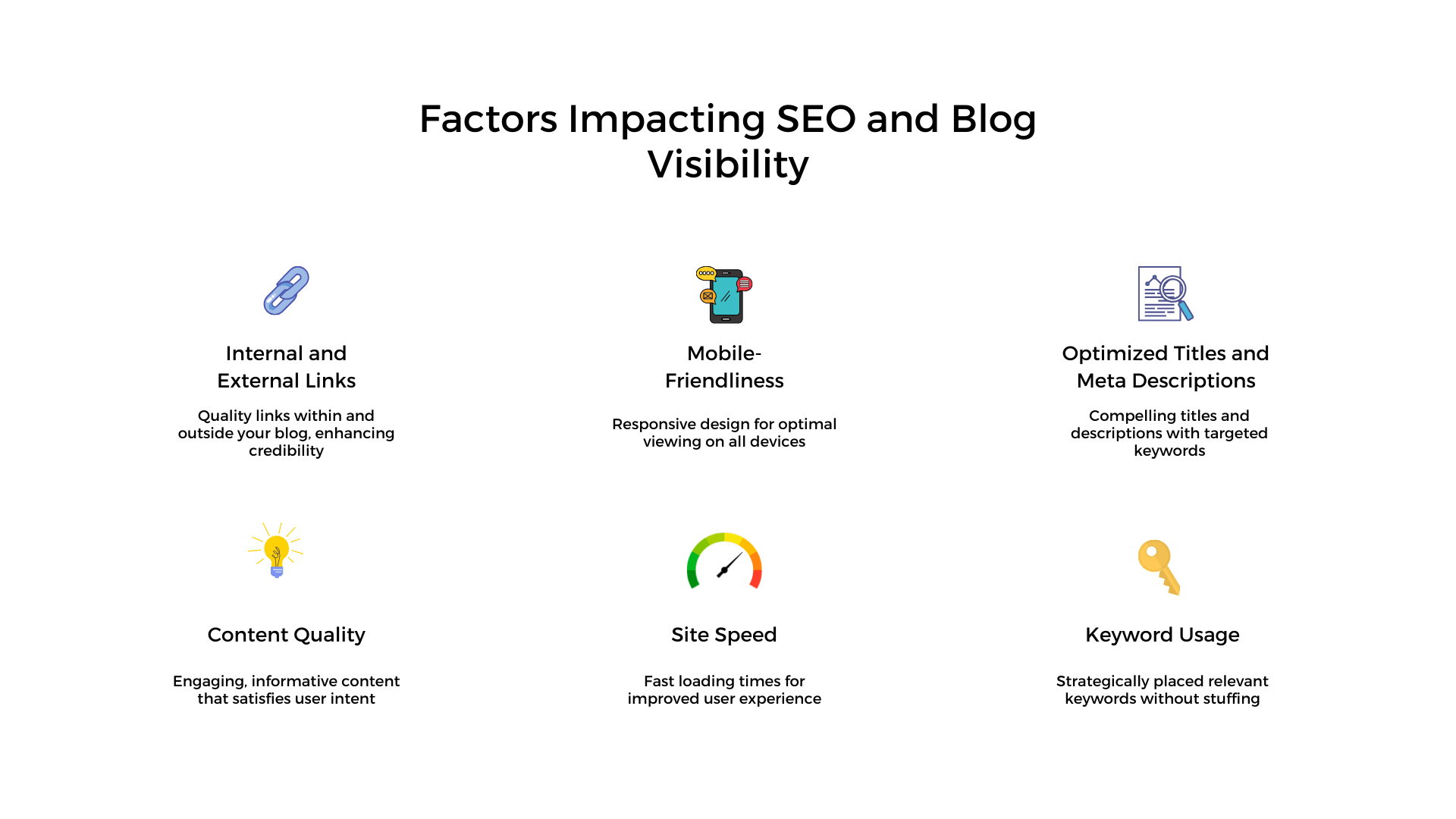
By implementing an effective SEO strategy that covers these factors, bloggers can increase their visibility on search engines and attract more organic traffic.
To sum it up, whenever you dive into the online world, SEO plays an essential role in determining how easily your blog will be discovered by potential readers. Incorporating SEO best practices ensures that your blog gains a higher ranking in SERPs and enjoys greater visibility in the highly competitive online market.
Setting SEO goals and objectives
Setting realistic expectations is crucial when it comes to SEO for blogs.
It’s important to understand that SEO outcomes usually take time and require patience. Achieving high rankings for competitive keywords isn’t an overnight process; it needs ongoing effort, determination, and continuous improvement.
You should create a long-term SEO plan with clear goals and objectives.
This plan should outline the steps and timelines to achieve the desired outcomes, whether it be increasing organic traffic, improving keyword rankings, or enhancing user engagement.
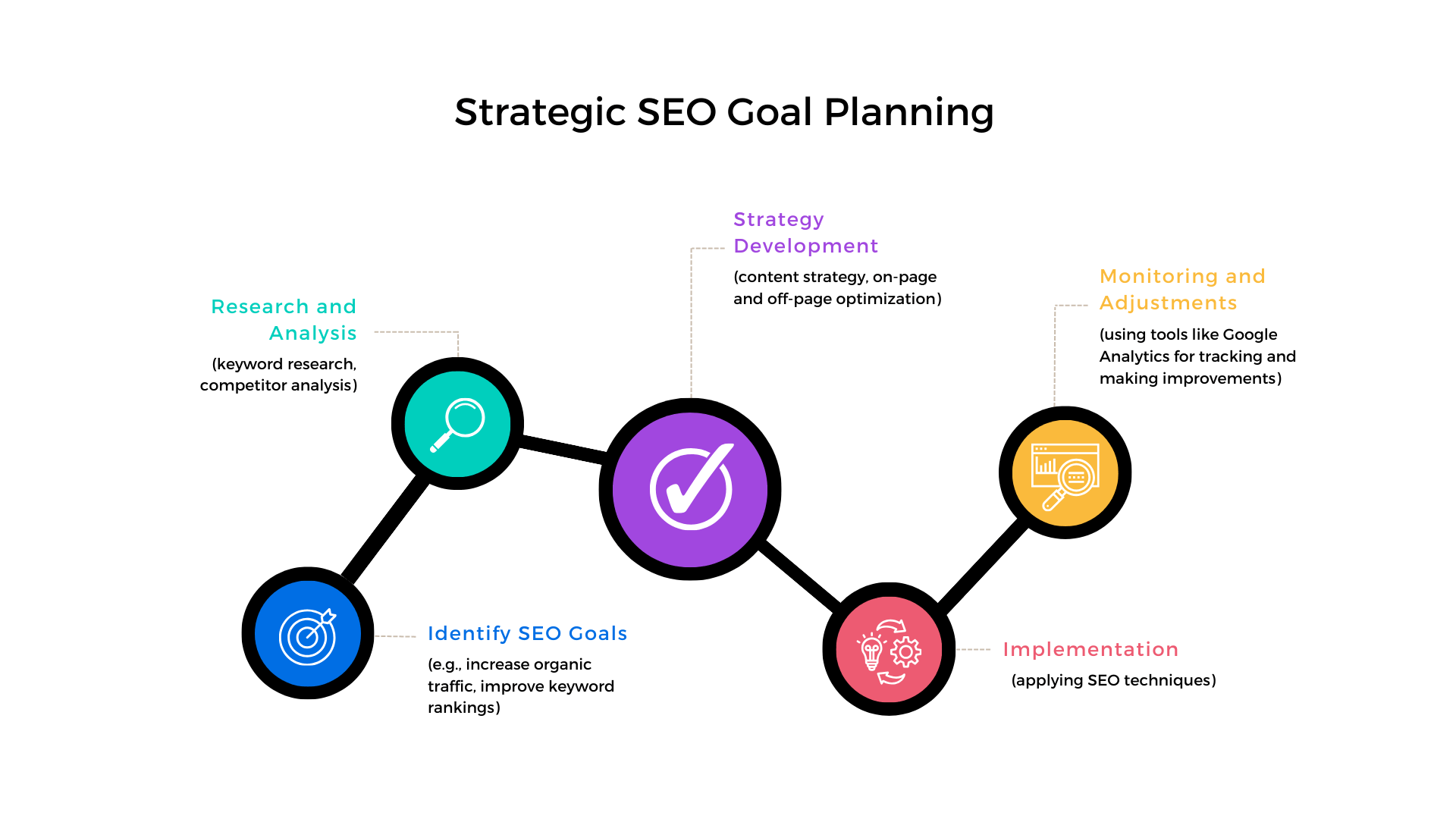
A long-term plan helps in systematic progress and provides a framework for making data-driven decisions, which is critical for adapting and optimizing the blog for better SEO performance.
Understanding and implementing SEO techniques in blog management is crucial for achieving greater visibility. By setting realistic goals and creating a long-term plan, you can enhance your online presence and attract a more significant number of organic visitors.
Keyword Research for Blog Content
When it comes to optimizing your blog content for search engines, keywords play a crucial role.
They are the terms and phrases that users enter in search engines to find information on a particular topic. By targeting the right keywords, you can increase the visibility of your blog and attract more organic traffic.
Choosing the right keywords
Selecting the appropriate keywords for your blog content involves understanding the intent behind those keywords and the relevance of your content to that intent.
It’s important to choose keywords that have a reasonable search volume, as this indicates a high number of users are looking for the information that your content provides.
Additionally, consider keyword competition; targeting highly competitive keywords might not always be the best strategy, especially for new or small blogs.
One of the effective ways of finding the right keywords is by analyzing your target audience. Identify their interests and pain points, and create content that addresses these needs by including relevant keywords.
Long-tail keywords and their relevance in SEO
Long-tail keywords are search queries that consist of three or more words and are more specific in nature.
These keywords often have lower search volume compared to generic, short-tail keywords but have a higher conversion rate.
This is because long-tail keywords cater to more refined Google search queries that are closer to the user’s intent.
Incorporating long-tail keywords in your blog content can significantly improve your chances of ranking higher in search engine result pages (SERPs). Since long-tail keywords are less competitive, they provide an opportunity for your blog to rank higher, especially if your niche is saturated.
Selecting the right keywords and incorporating long-tail keywords in your blog content is essential for better search engine visibility and ranking.
Tools and techniques for keyword research
There are numerous SEO tools available for keyword research. Some of the most popular and reliable tools include:
- Google Keyword Planner: Google Keyword Planner is a free tool offered by Google as part of its Google Ads platform. This tool provides insights into the average monthly search volume, competition, and suggested bids for the selected keywords. It can help you identify potential keywords relevant to your niche and assess their performance.
- SEMrush: SEMrush is an SEO tool that provides extensive keyword research, competitor analysis, and website audit features. With its user-friendly interface and wealth of data, SEMrush is an invaluable resource for both beginners and experienced bloggers.
- Ahrefs: Ahrefs is a powerful SEO tool that offers keyword research functionalities along with backlink analysis, site audits, and rank tracking. Their comprehensive keyword research tool helps you find thousands of relevant keywords, making it easier to identify the best options for your blog.
- Moz: Moz is another popular SEO tool that offers various features, including keyword research. Its Keyword Explorer provides refined search volume and competition data, making it simple to evaluate the potential of your target keywords.
Using advanced keyword research tools like Google Keyword Planner, SEMrush, Ahrefs, and Moz can help you identify and analyze the best keywords to target in your blog content.
Conducting a Competitor analysis
Studying your competitor’s keyword strategies can offer valuable insights and help you refine your approach.
Competitor analysis involves the following steps:
1. Identifying your blog’s competitors
Start by making a list of your direct and indirect competitors.
Direct competitors are those who create content within the same niche as yours, while indirect competitors are those who provide content on related topics.
2. Analyzing your competitor’s keywords strategy
Using SEO tools like SEMrush or Ahrefs, you can gain insights into the keywords your competitors are targeting, their keyword ranking, and backlink profiles.
Analyze their blog content to understand how they incorporate keywords, and identify gaps that you can explore to create unique, engaging content.
3. Learning from their successes and failures
Competitor analysis isn’t just about copying successful strategies; it’s about learning from both your competitors’ successes and failures.
Analyze their top-performing content and identify patterns that contribute to their success. Additionally, assess where they failed, and take note of these mistakes to avoid making them yourself.
Conducting a thorough competitor analysis is crucial for refining your keyword research strategy and staying ahead in the highly competitive blogging landscape.
Use the insights gained from your competitors’ keyword strategies to create effective content that appeals to your target audience and ranks high in search engine results.
Optimizing Blog Content for SEO
In the world of online and digital marketing, Search Engine Optimization (SEO) plays an important role in ensuring the success and visibility of your blog.
Optimizing your blog content for SEO involves three key aspects:
- Creating high-quality content.
- Optimizing on-page factors.
- Optimizing off-page factors.
Creating high-quality content
Quality content is the foundation of SEO. Well-researched, engaging, and informative content is valuable for your readers and essential for better search engine rankings.
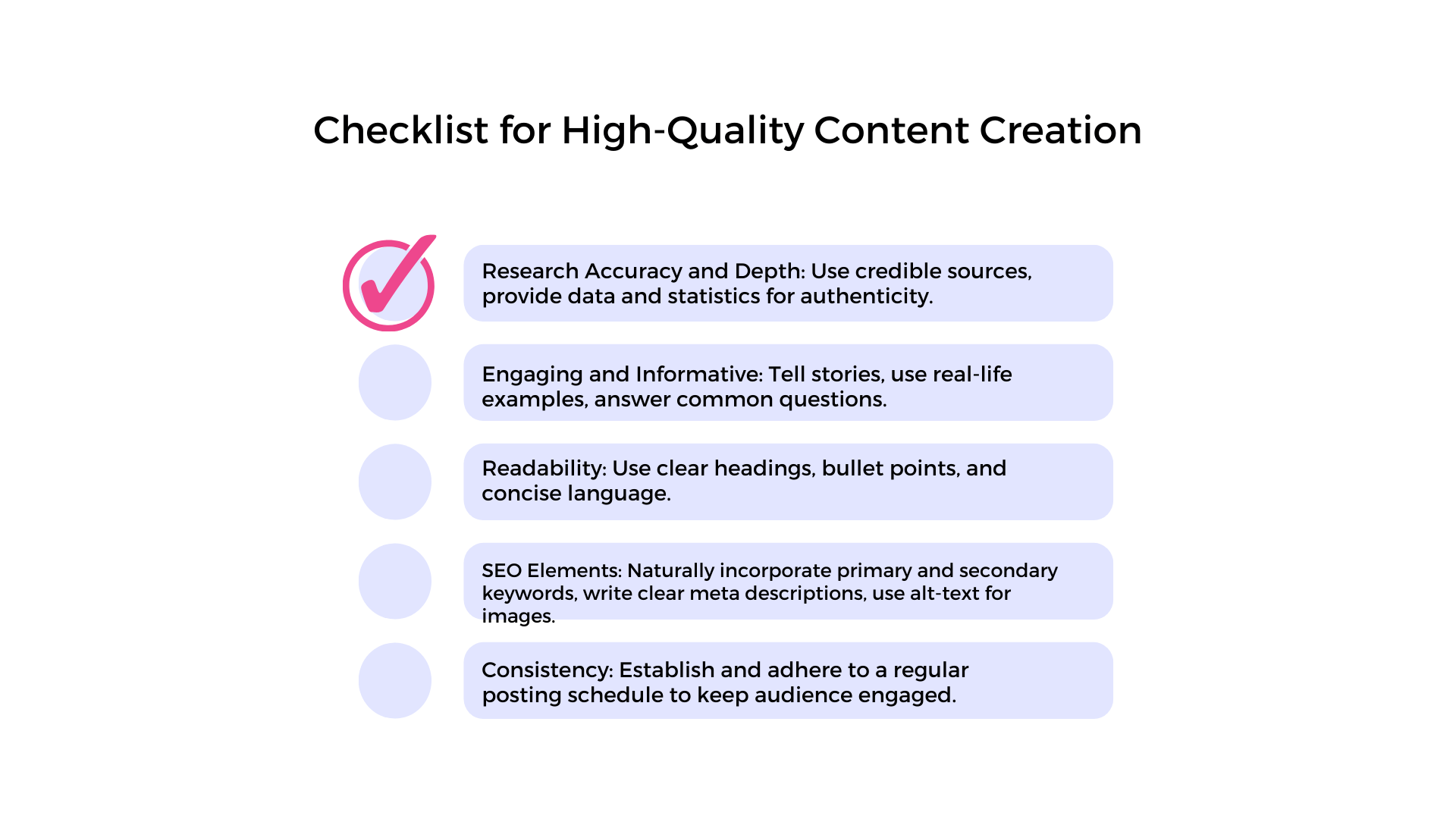
- The significance of well-researched content: Investment in research gives your blog credibility and makes it a go-to resource for readers looking for accurate and reliable information. When search engines like Google recognize that people find your content useful, they are more likely to rank it higher in search results.
- Crafting engaging and informative content: Readers will stay on your blog and share your content if they find it engaging and informative. Make sure to break down complex information into digestible chunks, use visuals to support your content, and create a conversational tone.
- Maintaining consistency in content production: Posting content consistently not only keeps your readers engaged but also signals to search engines that your blog is active and relevant. Develop an editorial calendar to plan and schedule content production, and ensure that you stick to it.
Creating high-quality content involves conducting thorough research, presenting it in an engaging and informative manner, and maintaining a consistent publishing schedule.
Optimizing on-page SEO factors
On-page factors play a crucial role in improving your blog’s search engine ranking. These elements include:
- Titles.
- Headings.
- Keywords.
- Meta descriptions.
Crafting SEO-friendly titles and headings
The title of your blog post should include the primary keyword and compel the reader to click on it.
Additionally, use headings (H1, H2, H3, etc.) to structure your content and include relevant keywords for better SEO.
Using keywords strategically within content:
Place the primary keyword in the title, headings, and the first 100 words of your blog post.
Also, incorporate secondary and long-tail keywords throughout the content naturally.
Avoid keyword stuffing as it can harm your SEO efforts.
Creating an optimal meta-description
Meta descriptions are brief summaries of your blog post that appear in search results. These descriptions should be concise, include your primary keyword, and encourage users to click on your post.
Optimizing off-page SEO factors
Off-page optimization refers to the techniques used to increase your blog’s credibility and authority outside your website.
Building high-quality backlinks
Backlinks from authoritative websites signal that your content is valuable and trustworthy. You can earn high-quality backlinks through guest blogging, outreach, and content promotion.
Internal linking between blog articles
Internal links help your readers easily navigate your website and understand the relationship between different posts. It also helps search engines better index your content.
Add relevant internal links when writing new blog posts and review older posts to find opportunities for internal linking.
By focusing on creating high-quality content, optimizing on-page factors, and enhancing off-page factors, you can improve your blog’s SEO performance and drive organic search traffic to your website.
Questions? We Have Answers.
Get answers to a list of the most Frequently Asked Questions.



0 comments